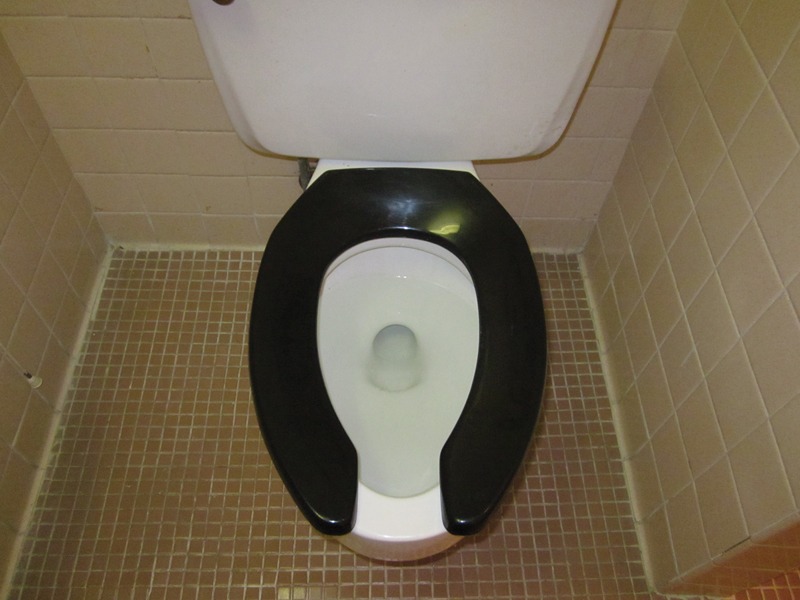Fall management program reduces falls by 53 percent
Whether the older adult lives at home or in a long-term care community, staying active is one of the essentials of healthy aging. If, however, the individual’s mobility is compromised, the risk of a life-altering fall becomes a primary concern. Residents shouldn’t have to sit in chairs all day or be restrained to avoid fall situations.
 The Center for Nursing and Rehabilitation (CNR) in Brooklyn, N.Y., a member of CenterLight Health System, received the American Medical Directors Association (AMDA) 2012 Quality Improvement and Health Outcome Award for its fall prevention program, “Enhancing Resident Safety via a Fall Reduction Initiative.” Dr. Saka Kazeem, CNR’s medical director, believes in an interdisciplinary approach to reducing falls. “Everyone, from the nurses to housekeepers, needs to be involved in the program for it to be successful,” says Dr. Kazeem.
The Center for Nursing and Rehabilitation (CNR) in Brooklyn, N.Y., a member of CenterLight Health System, received the American Medical Directors Association (AMDA) 2012 Quality Improvement and Health Outcome Award for its fall prevention program, “Enhancing Resident Safety via a Fall Reduction Initiative.” Dr. Saka Kazeem, CNR’s medical director, believes in an interdisciplinary approach to reducing falls. “Everyone, from the nurses to housekeepers, needs to be involved in the program for it to be successful,” says Dr. Kazeem.
Although CNR had an existing fall prevention program, a committee was formed to review, recommend and implement new measures to reduce falls. Its goal was to reduce falls by 25 percent from its implementation from October 2010 to October 2011. The fall management program at that time assessed residents, and made use of low beds and bed/chair alarms. While the resident assessment tool in use assessed for risk, it did not quantify it (i.e., low to high risk). In preparation for the enhanced fall management program, staff attended in-services on fall management principles, policies and procedures. They also trained on how to use the revised documentation tools.
 Twenty-five “Nursing Interventions for Fall Management” and 15 “Nursing Interventions for Safe Resident Transfer” that were developed by the interdisciplinary team were added to the assessment tool for handy reference. Also, staff received specific policies and procedures to follow when a fall does occur.
Twenty-five “Nursing Interventions for Fall Management” and 15 “Nursing Interventions for Safe Resident Transfer” that were developed by the interdisciplinary team were added to the assessment tool for handy reference. Also, staff received specific policies and procedures to follow when a fall does occur.
ENHANCING THE FALLS PROGRAM
Residents can take a spill anywhere in the facility. Dr. Kazeem stresses the importance of keeping hallways and other areas free of obstacles and debris. Residents may walk independently, use a walker or a cane for support and the fewer obstruction they encounter, the better.
Program data, however, indicated that most falls occurred in the residents’ rooms. “Bathrooms were one of the first areas we analyzed as presenting fall hazards,” says Dr. Kazeem. “In rehab, patients often did not seek assistance from aides. They might be unsteady, but would still try to get to the bathroom without help.”
For residents with low vision or problems with depth perception, it is difficult to distinguish the toilet from the floor, the distance from the commode to the sink, for example. To address this problem and minimize risk, the fall management committee asked CNR’s environmental services department for assistance in increasing visibility in the bathroom.
 A simple, low-cost solution was to install black toilet seats on the commode, which provided enough visual contrast between the white toilet and the neutral bathroom flooring. “It was a small investment as compared to caring for an injury,” notes Dr. Kazeem. Eighteen toilet seats were purchased for a total cost of $530.10. In addition, better lighting ensured that the resident could see the way to the bathroom from the bed and navigate the area more safely.
A simple, low-cost solution was to install black toilet seats on the commode, which provided enough visual contrast between the white toilet and the neutral bathroom flooring. “It was a small investment as compared to caring for an injury,” notes Dr. Kazeem. Eighteen toilet seats were purchased for a total cost of $530.10. In addition, better lighting ensured that the resident could see the way to the bathroom from the bed and navigate the area more safely.
PROTECTING RESIDENTS WITH COGNITIVE CHALLENGES
Even with improvements in bathroom access, some falls occurred as residents exited the bed. It was decided to put mattress overlays with built-in side guards on the beds of at-risk patients. Because the overlays had an exit, they were not considered restraints. “On beds with alarms, the overlays also slowed exiting, which gave staff time to respond,” notes Dr. Kazeem.
Pain is another important consideration in assessing for fall risk. “Our pain assessments were revised to include the PainAD [advance dementia] scale,” says Dr. Kazeem. For residents with cognitive challenges and behavioral issues, assessments were reviewed to make sure that pain is not mistaken for a behavioral issue.
“We also challenged our therapeutic recreation team to provide engaging activities and programs to these residents during the peak fall hours of 7 p.m. to 9 p.m.,” says Dr. Kazeem.
THE RESULTS
First quarter data (October 1 through December 31, 2010) revealed that CNR residents experienced 73 falls. Data was collected at the end of each quarter to determine the number of falls, the primary location and the impact of the enhanced fall management program.
By the fifth quarter analysis (July 1 through September 30, 2011), data showed that CNR had reduced falls from the 73 falls in its first data to 36 falls—a 53 percent reduction. “Seeing this reduction in falls has been gratifying,” says Dr. Kazeem. Staff involvement, dedication and vigilance are credited with the success of the program.
CNR Executive Director Randolf Palmaira sums up the importance of this program, “We created a safer patient environment by reducing the number of falls…. We hope others will see the wisdom of using the same techniques.”

Sandra Hoban was on I Advance Senior Care / Long-Term Living’s editorial staff for 17 years. She is one of the country’s longest-serving senior care journalists. Before joining Long-Term Living, she was a member of the promotions department at Advanstar Communications. In addition to her editorial experience, Sandi has served past roles in print and broadcast advertising as a traffic and talent coordinator.
Related Articles
Topics: Activities , Alzheimer's/Dementia , Articles , Rehabilitation











